Day 1 :
Keynote Forum
Haval Shirwan
University of Louisville, USA
Keynote: Targeted deletion of pathogenic T effector cells as a robust means of allograft tolerance
Time : 10:00-10:30

Biography:
Haval Shirwan is Dr. Michael and Joan Hamilton Endowed Chair in Autoimmune Disease, Professor of Microbiology and Immunology, Director of Molecular Immunomodulation Program at the Institute for Cellular Therapeutics. He conducted his Graduate studies at the University of California in Santa Barbara, CA, and Postdoctoral studies at California Institute of Technology in Pasadena, CA. He joined the University of Louisville in 1998 after holding academic appointments at various academic institutions in the United States. His research focuses on the modulation of immune system for the treatment of immune-based diseases with particular focus on type 1 diabetes, transplantation, and development of prophylactic and therapeutic vaccines against cancer and infectious diseases. He is an inventor on over a dozen of worldwide patents, founder and CEO/CSO of FasCure Therapeutics, LLC, widely published, organized and lectured at numerous national/international conferences, served on study sections for various federal and non-profit funding agencies, and is on the Editorial Board of a number of scientific journals. He is member of several national and international societies and recipient of various awards.
Abstract:
Transplantation of pancreatic islets as a source of beta cells producing insulin has proven effective in improving metabolic control/quality of life and preventing severe hypoglycemic events in patients with type 1 diabetes. Rejection of islets mediated by T cells is a major limitation of clinical islet transplantation, which is presently controlled by standard immunosuppression. Chronic use of immunosuppression is not only ineffective in controlling rejection, but also has various side effects compromising the life quality of graft recipients. Therefore, there is an acute need for the development of targeted immunomodulatory approaches that have efficacy and safety features. Inasmuch as T effector cells are the major culprit of allograft rejection and their pathogenic function is controlled by T regulatory cells, we have recently developed novel forms of immune ligands to target pathogenic T cells for physical elimination, while simultaneously expanding protective T regulatory cells. The application of this concept to pancreatic islet grafts for the treatment of diabetes will be discussed.
Keynote Forum
Mahendra S.Rao
Q Therapeutics, Inc., USA
Keynote: IPSC derived MSC and MSC engineering
Time : 10:30-11:00

Biography:
Dr. Mahendra S. Rao, M.D., Ph.D., serves as the Vice President of Strategic Affairs at Q Therapeutics and the Vice President of Regenerative Medicine at the New York Stem Cell Foundation. Dr. Rao is a Scientific Co-Founder of Q Therapeutics, Inc. He has been Chairman of Scientific & Medical Advisory Board and Chief Clinical & Regulatory Advisor at CBR Systems, Inc. since February 2015. Dr. Rao serves as Chairman of the Scientific Advisory Board and Chief Strategy Officer at Q Therapeutics, Inc. Dr. Rao was a Scientific Co-Founder and Chief Scientific Consultant of Q Therapeutics, Inc. He heads stem cell research and development program at Invitrogen Corp. He is an expert in glial stem cell biology and for the last 20 years has acted as a Scientific Consultant for a broad range of constituencies in academia, government, regulatory affairs and industry. He is involved in stem cell research for more than a decade. Dr. Rao served as the Chief of the Laboratory of Stem Cell Biology at the NIH. Before joining the NIH, Dr. Rao led the Stem Cell and Regenerative Medicine division at Life Technologies. He serves as a Member of Scientific Advisory Board for IPSC Banking and CGMP Production at Allele Biotechnology and Pharmaceuticals, Inc. He serves as Member of the Scientific Advisory Board at ReNeuron Group plc. He has been an Independent Director of Cesca Therapeutics Inc. since April 1, 2014. Dr. Rao has served as the Chairman of the FDA's Cell and Gene Therapy Advisory Committee. He served as chair of the FDA's Center for Biologics Evaluation and Research (CBER) Advisory committee. Dr. Rao serves as Vice President for Regenerative Medicine at The New York Stem Cell Foundation Research Institute.
Abstract:
Mesenchymal stem cells have been approved for therapy in multiple geographies and for multiple indications. However, manufacturing from an adult source has been a challenge for allogeneic use. We have proposed that MSC derived from IPSC may solve this sourcing issue and offer several advantages such as the ability to prospectively identify the right allelic phenotype and the possibility of genetically modifying the cells to enhance their utility.
Keynote Forum
Paul J Davis
Albany College of Pharmacy and Health Sciences, USA
Keynote: Nano-diamino-tetrac (NDAT; Nanotetrac) acts at its target on integrin ï¡vï¢3 in human glioblastoma xenografts to induce necrosis via anti-angiogenesis and apoptosis
Time : 11:20-11:50

Biography:
- Dr Paul J Davis is a graduate of Harvard Medical School and had his postgraduate medical training at Albert Einstein College of Medicine and the NIH. His academic positions have included Chair, Department of Medicine at Albany Medical College. He has served as President of American Thyroid Association, as a member of the Board of Directors of the American Board of Internal Medicine and he is Co-Head, Faculty of 1000 – Endocrinology. He serves on multiple Editorial Boards of His scientific interests include molecular mechanisms of actions of nonpeptide hormones, particularly, thyroid hormone. He and his colleagues described the cell surface receptor for thyroid hormone on integrin αvß3 that underlies the pro-angiogenic activity of the hormone and the proliferative action of the hormone on cancer cells. He has co-authored more than 200 original research articles and 30 textbook chapters and he has edited three medical textbooks.
Abstract:
Clinical evidence in a limited number of patients supports the concept that glioblastoma multiforme (GBM) is a thyroid hormone-dependent cancer. In vitro evidence indicates that L-thyroxine (T4), the principal secretory product of the thyroid gland, at physiological concentrations stimulates proliferation of glioma/GBM cancer cells via a polyfunctional cell surface receptor for T4 on the extracellular domain of cancer cell plasma membrane integrin avb3. This action of T4 is blocked by nanoparticulate tetraiodothyroacetic acid (Nanotetrac, Nano-diamino-tetrac, NDAT). Tetrac in this NDAT formulation is covalently bound via a diaminopropane linker to a poly(lactic-co-glycolic acid) (PLGA) nanoparticle. We have examined histopathologically the induction by NDAT of devascularization, of necrosis and apoptosis in U87MG human GBM cell xenografts in nude mice. Treatment regimen was 1 mg tetrac equivalent/kg body weight s.c. as NDAT daily X10 d, begun 2 d following tumor cell implantation when tumor volume estimates were 350 mm3. Xenografted control animals received void nanoparticulate PLGA. Xenograft weight in treated animals at sacrifice was reduced by 50% (P<0.01). Tumor area measured in histologic sections was reduced by 80% in treated animals compared to controls (P<0.001). Blinded analysis of changes in histologic slides from xenografts revealed essentially complete loss of tumor blood vessels with NDAT (P<0.001 vs. control xenografts). This finding was associated with no evidence of hemorrhage. Eighty percent of the cell population in grafts was either necrotic or apoptotic (P<0.001 vs. control) and cell density was reduced by 60% vs. control tumors (P <0.001 vs. control). Mitotic figures/field examined was reduced by 80%. In summary, NDAT, acting at the thyroid hormone-tetrac receptor on the extracellular domain of integrin avb3, devascularized human GBM xenografts with resultant widespread necrosis. In the tumor cell population that was not necrotic, drug-induced apoptosis was documented. The thyroid hormone receptor on avb3 in U87MG cells is a single endocrine target with multiple downstream functions that are exploited by anticancer and anti-angiogenic actions of NDAT.
Keynote Forum
Bakhos A Tannous
Harvard Medical School, USA
Keynote: Glioblastoma cells and stem cells: Imaging and gene/drug/cell therapy
Time : 11:50-12:20

Biography:
Bakhos A Tannous is an Associate Professor of Neurology at Harvard Medical School and Director for the Interdepartmental Neuroscience Center at the Massachusetts General Hospital. He is a member of the Dana Farber/Harvard Cancer Center and also acts as Co-Director of the Molecular Neurogenetics Unit-East. His research interest includes novel imaging, high throughput discovery of gene/cell/drug therapies for brain tumors, with a primary focus on glioma stem cells, as well as detection of tumor-specific biomarkers in blood. He has published >90 papers and serves as an Editorial Board Member of several journals.
Abstract:
Glioblastomas (GBMs) comprises >50% of all primary brain tumors and are the most malignant type with a 5-year survival rate of only 3.3%, despite standard-of-care (surgery, radiation and temozolomide). Recently it has been shown that the glioma stem-like cells (GSCs; or tumor initiating cells) sub-population of the tumor are largely responsive for tumor resistance, recurrence and patient death, thus providing a clinically-relevant model to study GBM. GBMs are highly heterogeneous and there is a complex interaction among different subtypes of tumor cells and stromal cells associated with the tumor which can modify the tumor itself as well as its microenvironment to promote tumor growth, invasion, angiogenesis and immune suppression. The transcriptome profiles of GBMs has identified four major subtypes, two of which, proneural (PN) and mesenchymal (MES), predominate with multiple subtypes residing in the same tumor. GBM with enriched MES properties typically display a more aggressive phenotype both in vitro and in vivo with pronounced radio/chemo resistance. Our goal is to understand GBM progression and therapeutic resistance to help us develop novel diagnostics/therapeutics aiming at eradicating this cancer type. Over the last several years, we have developed novel efficient gene/drug/cell therapeutic strategies that bypass the blood-brain barrier to target and eradicate patient-derived GBM stem cells model.
- Stem Cells | Stem Cell Therapy | Stem Cell Biomarkers | Cellular Therapies | Stem Cells and Cancer | Cell and Organ Regeneration | Cell Differentiation and Disease Modeling | Stem Cell Plasticity and Reprogramming | Tumor Cell Science
Location: Orlando

Chair
Paul J Davis
Albany Medical College, USA

Co-Chair
Haval Shirwan
University of Louisville, USA
Session Introduction
Brian Mehling
Blue Horizon International LLC, USA
Title: Analysis of outcomes following mesenchymal stem cell therapy in subjects with musculoskeletal conditions
Time : 12:20-12:40

Biography:
Abstract:
Margarita Glazova
Russian Academy of Science, Russia
Title: Hippocampal neurogenesis in rats genetically prone to audiogenic seizure

Biography:
Abstract:
Mei Wan
The Johns Hopkins University, USA
Title: Lineage fate determination of MSCs in tissue repair/ remodeling

Biography:
Abstract:
Aletta Schnitzler
EMD Millipore Corporation, USA
Title: Single use technologies support large scale manufacturing of cellular therapies

Biography:
Abstract:
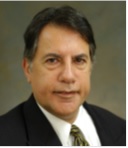
Biography:
Abstract:
Meenakshi Chellaiah
University of Maryland Dental School, USA
Title: Identification of Expression of Putative Cancer Stem Cell Markers in Prostate Cancer

Biography:
Abstract:
Željka VeÄerić-Haler
University Medical Centre Ljubljana, Slovenia
Title: Protective effect of T cell depletion anticipating mesenchymal stem cell transplantation in acute kidney injury mice model
Biography:
Abstract:
Michael Schmutzer
University of Munich, Germany
Title: Cell compaction influences the regenerative potential of passaged bovine articular chondrocytes in an ex vivo cartilage defect model
Biography:
Abstract:

Biography:
Abstract:
Helen McGettrick
University of Birmingham, UK
Title: Adipogenic differentiation of MSC alters their immunomodulatory properties in a tissue-specific manner
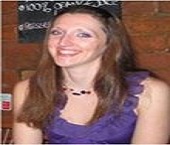
Biography:
Abstract:
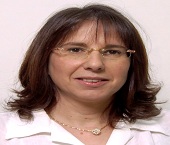
Biography:
Abstract:
Arshak R Alexanian
Cell Reprogramming & Therapeutics LLC, USA
Title: Small molecule approach for direct reprogramming of human mesenchymal stem cells into different neuronal subtypes
Biography:
Abstract:
Fuchou Tang
Peking University, China
Title: Using Single cell functional genomics approach to study gene expression network in human early embryos
Biography:
Abstract:
Paul J Davis
Albany College of Pharmacy and Health Sciences, USA
Title: PD-L1 and PD-1 gene expression are both stimulated by thyroid hormone in cancer cells

Biography:
Abstract:
- Stem Cells | Stem Cell Therapy | Cellular Therapies | Stem Cells and Cancer | Cell and Organ Regeneration
Location: Hall- A
Session Introduction
Haval Shirwan
University of Louisville, USA
Title: SA-4-1BBL as an adjuvant platform for the development of vaccines

Biography:
Abstract:
Yuhang Zhang
University of Cincinnati, USA
Title: Microenvironmental induction of cell cycle blockade in malignant melanoma
Biography:
Abstract:
Thomas Andl
University of Central Florida, USA
Title: Squamous epithelia as a paradigm to define the role of stem cells quiescence for longevity

Biography:
Abstract:
George G Chen
The Chinese University of Hong Kong, Hong Kong
Title: Reduction of cytochrome P450 1A2 in hepatocellular carcinoma
Biography:
Abstract:
Purwati Armand
Universitas Airlangga, Indonesia
Title: The role of haematopoetic stem cells (HSCs) and mesenchymal stem cells (MSCs) as a treatment in severe sepsis
Biography:
Abstract:
Kenneth K Wu
National Health Research Institutes and CMU, Taiwan
Title: Prevention of stress-induced MSC premature senescence by 5-methoxytryptophan

Biography:
Abstract:
Yoshiaki Ito
National University of Singapore, Singapore
Title: Identification of RUNX1 enhancer element that targets tissue stem cells of gastric and other organs
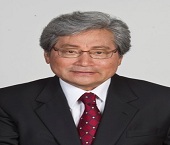
Biography:
Abstract:
Ganapathi Bhat M
Jaslok Hospital and Research Centre, India
Title: Fighting the good fight: GVHD in allogeneic haematopoietic stem cell transplant

Biography:
Abstract:
Mahsa Rashidi
Children’s National Hospital, USA
Title: Differentiation of murine dermal papilla cells into myogenic linage for cell-based therapies in duchenne muscular dystrophy
Biography:
Abstract:
Medet Jumabay
David Geffen School of Medicine at UCLA, USA
Title: Dedifferentiated Fat (DFAT) cells - A new cell source for regenerative medicine
Biography:
Abstract:
Vincent S Gallicchio
Clemson University, USA
Title: Lithium effects on stem cells-still interesting through all these years
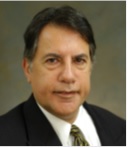
Biography:
Abstract:
Maliheh Nobakht
Iran University of Medical Science, Iran
Title: Survey of role SDF- 1 / CXCR4 pathway on cutaneous wound healing of rat by hair follicle stem cells
Biography:
Abstract:
Elham Poonaki
Islamic Azad University of Damghan, Iran
Title: Overexpression of lentiviral vector-mediated human BMP2 gene in the mesenchymal dental pulp stem cells (DPSCS)
Biography:
Abstract:
- Stem Cells | Stem Cell Thearpy | Novel Stem Cell Technologies | Tissue Engineering | Gene Thearpy and Stem Cells
Session Introduction
Thazhumpal C Mathew
Kuwait University, Kuwait
Title: Evidences of novel neurogenic niche in the ventricular region of the rat brain
Biography:
Abstract:
Nancy Berte
University Medial Center Mainz, Germany
Title: Identification of molecular markers in therapy-refractory glioblastoma
Biography:
Abstract:
Biography:
Abstract:
Maliheh Nobakht
Iran University of Medical Science, Iran
Title: The role of biodegradable engineered random polycaprolactone nanofiber scaffolds seeded with nestin positive hair follicle stem cells for tissue engineering
Biography:
Abstract:
Biography:
Abstract:
Mohammadhadi Fartookzadeh
Iran University of medical sciences, Iran
